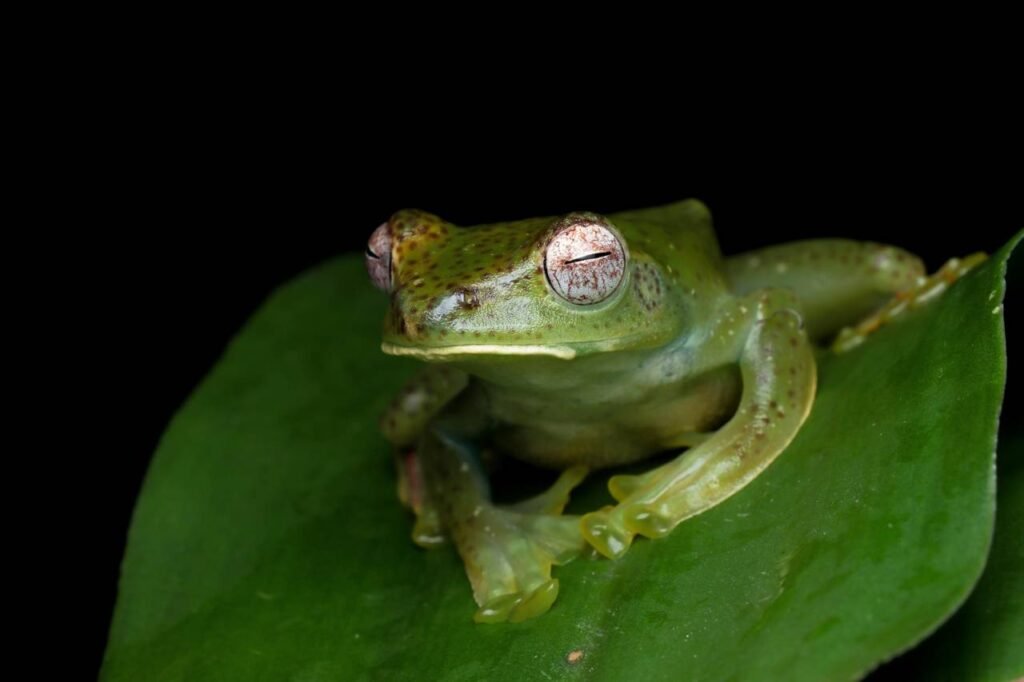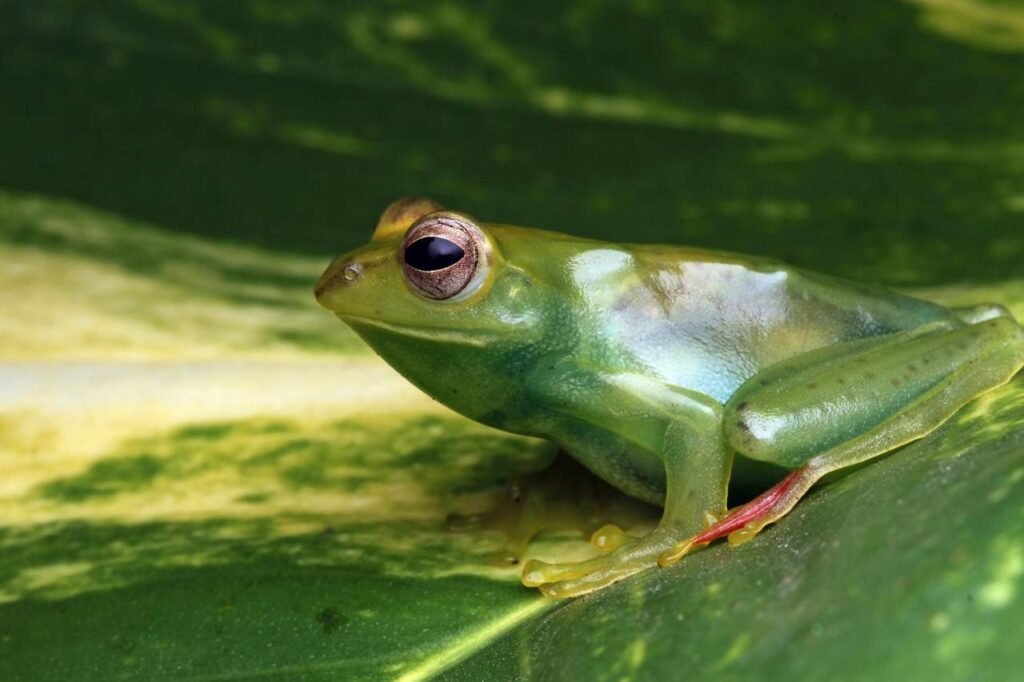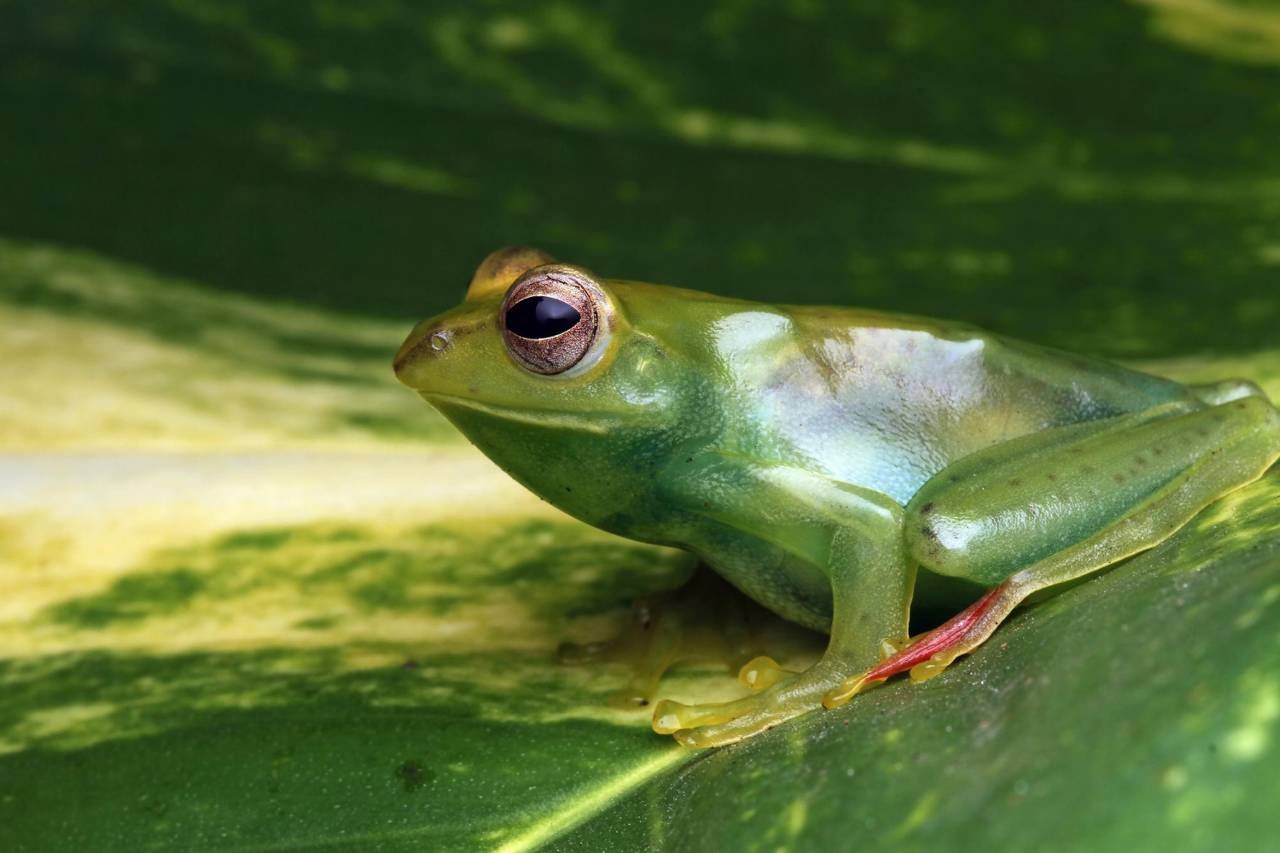The Glass Frog, belonging to the family Centrolenidae, is an extraordinary amphibian best known for its translucent skin, which allows us to see through their bodies. These captivating creatures provide a unique glimpse into the incredible adaptations of rainforest life. Let’s explore the fascinating world of Glass Frogs and what makes them stand out in the amphibian realm.
Characteristics and Appearance
Glass Frogs are named for their distinctive semi-transparent skin, especially on the underside, where the internal organs are often visible. Most of these frogs sport a vivid lime green on their dorsal side, helping them blend into the foliage. Their striking appearance serves as an effective camouflage against predators and gives a rare inside view of their biological functions.
Glass Frogs vary in size, typically ranging from 1.2 to 3 inches in length, depending on the species. Their unique physical characteristics make them an extraordinary component of rainforest biodiversity.


Habitat and Distribution
Glass Frogs are native to the tropical rainforests of Central and South America. They are primarily found in countries like Ecuador, Colombia, and Costa Rica, residing in the dense vegetation near streams and rivers. The humid environment and abundant water resources are essential for their breeding and survival.
Behavior and Diet
Glass Frogs are mostly nocturnal animals, spending their nights hunting for small insects and spiders. Their arboreal lifestyle sees them navigating the rainforest canopy with ease, using their long, slender limbs adapted for climbing.
Reproduction and Lifecycle
The breeding habits of Glass Frogs are as intriguing as their appearance. During the mating season, males call to attract females, often choosing leaves overhanging streams for egg-laying. The eggs are strategically placed on these leaves, and upon hatching, the tadpoles fall directly into the water below. The transparent skin of these frogs offers a subtle form of protection, making them harder to spot on the undersides of leaves.
The metamorphosis from tadpole to adult frog involves significant changes, as they gradually develop limbs and lungs to transition from an aquatic to a terrestrial life.
Conservation Status
While not all species of Glass Frogs are endangered, habitat destruction and environmental changes pose threats to their population. Preservation of their natural habitats through sustainable agricultural practices and protected reserves is crucial for their continued survival.
FAQs About Glass Frogs
Why are Glass Frogs called “Glass”?
They are called Glass Frogs due to their translucent skin, which allows for the visibility of internal organs, particularly on their underbelly.
Where do Glass Frogs naturally reside?
They are native to the rainforests of Central and South America, particularly in countries like Ecuador, Colombia, and Costa Rica.
How do Glass Frogs reproduce?
They lay their eggs on leaves overhanging streams, with the tadpoles falling into the water upon hatching. This strategy ensures a safe start to life.
What do Glass Frogs eat?
Their diet typically consists of small insects and spiders, which they hunt at night.
Are Glass Frogs endangered?
While not all species are endangered, Glass Frogs face habitat loss and environmental threats, necessitating conservation efforts to protect their natural environments.
How does the transparency of a Glass Frog benefit it in the wild?
The transparency can serve as a camouflage, making it harder for predators to spot them on the underside of leaves, thereby providing an additional layer of protection.
Are Glass Frogs active during the day or night?
Glass Frogs are primarily nocturnal, meaning they are most active during the night when they hunt for food and engage in reproductive activities.
What makes Glass Frogs unique compared to other frog species?
Their transparent skin is a distinctive feature that sets them apart from most other frog species, allowing unparalleled visibility of their internal organs.
Do Glass Frogs have any predators?
Like many frogs, Glass Frogs are preyed upon by birds, larger insects, and small mammals. Their transparency helps reduce visibility to some predators.
How do environmental changes impact Glass Frogs?
Habitat destruction, pollution, and climate change can significantly affect Glass Frog populations due to their reliance on specific environmental conditions for breeding and survival.
Can Glass Frogs be kept as pets?
While it might be possible to keep them as pets, doing so requires recreating their natural habitat and maintaining proper environmental conditions. It’s crucial to acquire them legally and ethically if considering them as pets.

